The Future of 3D Printed Bones
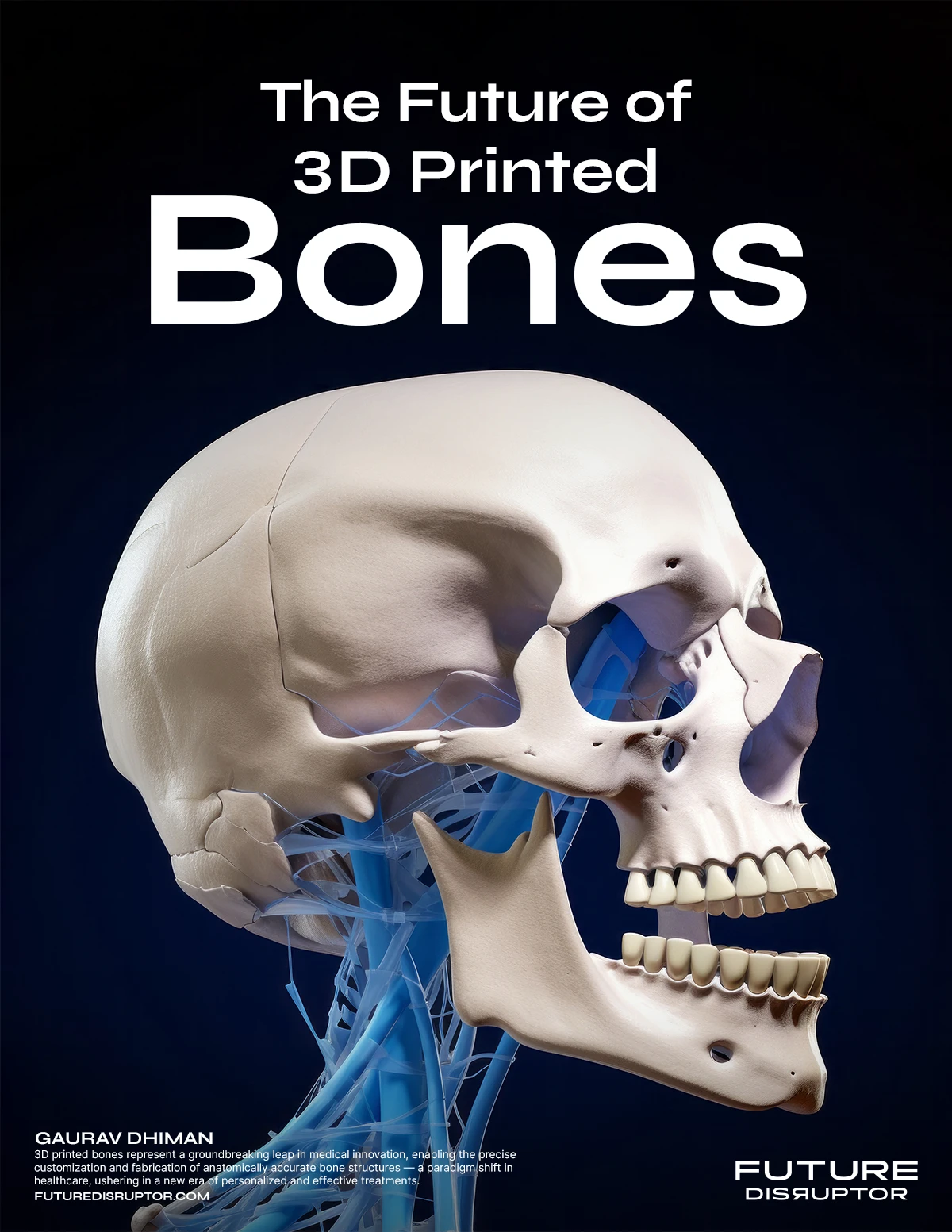
3D printed bone technology is a novel technique that allows bioengineers to create synthetic bone material with living cells inside the human body. One method uses ceramic ink that mimics the structure and chemistry of natural bone and can be 3D printed at room temperature in a gelatin bath. The printed bone material can then harden and integrate with the existing bone tissue, reducing the need for bone grafts and speeding up the recovery process.
This technology is also known or referred to as bioprinted bones, additive manufactured bones, 3D printed bone implants, custom printed bones, tissue-engineered bones, synthetic bones, digital bone fabrication, regenerative printed bones, patient-specific bone models, orthopedic 3D printing, and bone replacement constructs.
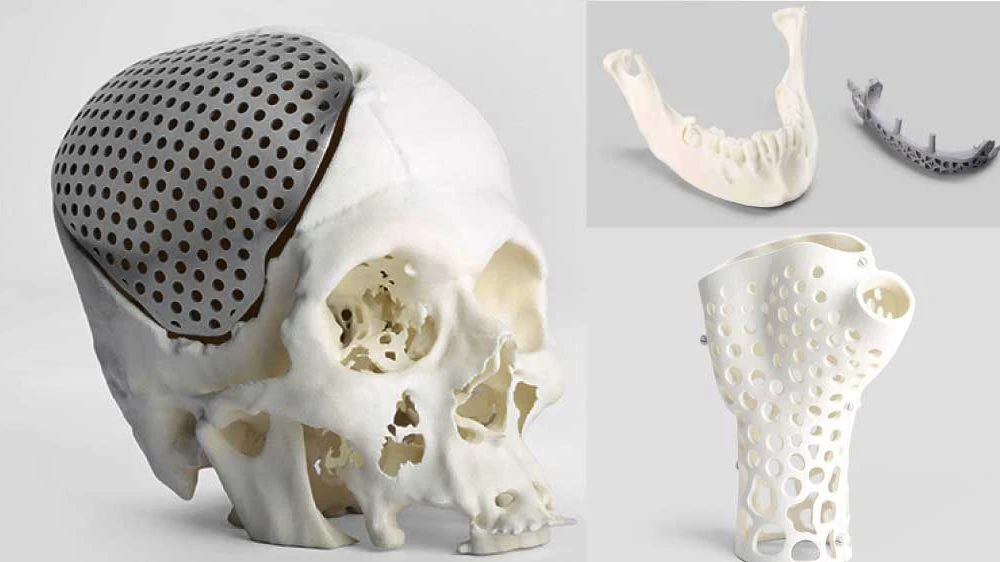
Practical Applications
3D printed bones have potential applications for treating bone diseases, injuries, and cancers. Some of the practical applications are:
- Creating personalized bone scaffolds that match the bone defect area’s size, shape, and structure.
- Printing bioactive materials with living cells and growth factors enhances bone tissue regeneration.
- Replacing the need for natural human bones in education, research, and surgical planning.
- Developing novel drug formulations and delivery systems for bone-related disorders.
Importance for Our Future
3D printed bones are important for our future because they can offer many benefits for patients who need bone replacements or repairs, such as:
- They can also pave the way for more innovations in bone tissue engineering, such as bioprinting vascularized and functional bone tissues, 4D printing of intelligent and responsive bone materials, and integrating nanotechnology and biomimetics for improved bone performance.
- Reduce pain and speed up recovery by creating personalized bone scaffolds that match the bone defect area and enhance bone tissue regeneration.
- Avoid problems related to donor sites or bone flaps by using patient-specific prostheses to replace joints, entire bones, or parts of the spine, skull, and pelvis.
- Develop novel drug formulations and delivery systems for bone-related disorders by printing bioactive materials with living cells and growth factors.
- Model bone disease and studying bone’s unique microenvironment by replacing the need for natural human bones in education, research, and surgical planning.
- Minimize the risk of infection and enhance the durability and cost-effectiveness of the implants by using ceramic material that mimics bone structure and chemistry.
How Does It Work?
3D printed bones work by following these steps:
- Modeling: Obtain a digital model of the object to be printed, such as a bone scaffold or a drug delivery system. This can be done by scanning the patient’s bone defect area or designing a custom shape.
- Slicing: Use specific slicing software to slice the model into thin layers that can be printed. The software also generates instructions for the printer, such as the nozzle’s speed, temperature, and direction.
- Printing: Upload the slice file to the printer and calibrate the printer to prepare for printing. The printer uses ceramic ink that mimics the structure and chemistry of natural bone and can be 3D printed at room temperature in a gelatin bath. The ink contains living cells and growth factors that enhance bone tissue regeneration. The printer extrudes the ink into the gelatin bath, where a chemical reaction occurs, and the ink hardens into a porous nanocrystal matrix. The printer repeats this process until the entire object is printed.
- Post-processing: Remove the support structures and clean the printed object. The object can then be implanted into the patient’s body, integrating with bone tissue and promoting healing.
Evolve in the Future
Here are some ways 3D printed bones can evolve in the future:
- Bioprinting of vascularized and functional bone tissues: One significant challenge is providing sufficient blood supply and nutrients to the implanted bone tissue, especially for large and complex defects. To address this issue, researchers are exploring the possibility of bioprinting vascularized and functional bone tissues that mimic bone’s natural structure and function, such as osteogenesis, angiogenesis, and immunomodulation. This can be achieved by using bioinks that contain different types of cells, such as endothelial cells, osteoblasts, and stem cells, as well as biomolecules, such as growth factors, cytokines, and extracellular matrix.
- 4D printing of intelligent and responsive bone materials: Another challenge is to create bone materials that can adapt to the dynamic and complex environment of the human body, such as changes in temperature, pH, stress, and inflammation. To address this issue, researchers are exploring the possibility of 4D printing of smart and responsive bone materials that can change their shape, structure, or function in response to external stimuli. This can be achieved using smart materials, such as shape memory polymers, hydrogels, and nanocomposites, that can undergo reversible transformations under various stimuli, such as light, heat, electricity, and magnetism.
- Integration of nanotechnology and biomimetics for improved bone performance: A further challenge is to create bone materials that can match or surpass the performance of natural bone, such as mechanical strength, biodegradation, and bioactivity. Researchers are exploring integrating nanotechnology and biomimetics to address this issue for improved bone performance. This can be achieved by using nanomaterials, such as nanoparticles, nanofibers, and nanosheets, that can enhance the properties of the bone materials, such as stiffness, toughness, porosity, and surface area. Moreover, the bone materials can achieve better integration and functionality with the host tissue by mimicking the hierarchical and multiscale organization of natural bone, such as the lamellar, osteon, and trabecular structures.
More research and development are needed to realize these potentials and to ensure the safety and efficacy of the technology for clinical applications.
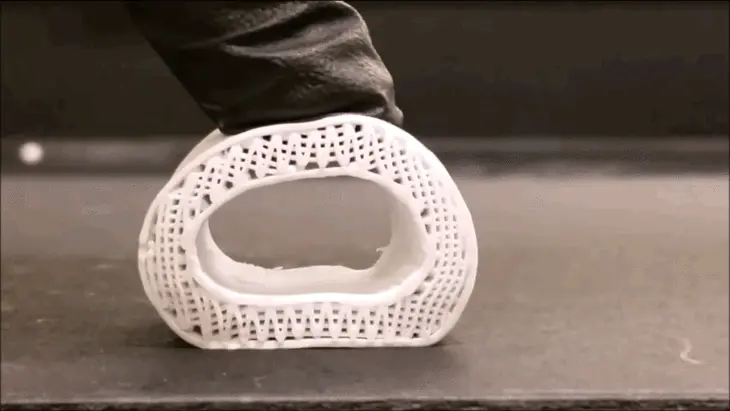
Help Organizations/Enterprises
3D printed bones can help organizations and enterprises in various ways, such as:
- Improve the quality of life and health outcomes for patients who need bone replacements or repairs by reducing pain, speeding up recovery time, and avoiding complications related to donor sites or bone flaps.
- Reduce the cost and time of bone implant manufacturing using a light, portable, and room-temperature 3D printer can create personalized bone scaffolds with living cells and growth factors inside the patient’s body.
- Enhance the innovation and competitiveness of the biomedical industry by developing novel bone materials and devices that mimic the structure, function, and performance of natural bone, such as vascularized and functional bone tissues, smart and responsive bone materials, and nanotechnology and biomimetics integrated bone materials.
- Expand the market and demand for bone-related products and services by offering more options and solutions for treating bone diseases, injuries, and cancers, modeling bone disease, and studying bone’s unique microenvironment.
Driving Adoption
Some of the factors that are driving 3D printed bones adoption are:
- There is an increase in demand for personalized and effective treatments for bone defects, diseases, and injuries, especially for large and complex cases that cannot be healed by natural bone or conventional methods.
- The advancement of 3D printing technology and materials, such as ceramic inks, high-strength hydrogels, and bioinks, can mimic the natural bone structure, chemistry, and function and can be printed at room temperature with living cells and without harsh chemicals.
- The availability and affordability of 3D printers and scanners, such as portable and handheld devices, can be used in situ or in surgical settings to create customized bone scaffolds and implants.
- The innovation and collaboration of researchers and clinicians from different disciplines, such as bioengineering, chemistry, biology, and medicine, to overcome the challenges and limitations of 3D printed bones, such as biocompatibility, mechanical strength, vascularization, and functionality.
Operational Challenges
Here are some of the challenges and limitations that we need to overcome for widespread adoption:
- Biocompatibility: It should be compatible with the host tissue and avoid adverse immune reactions, inflammation, or infection. The choice of biomaterials, bioinks, and cells should be carefully considered to ensure biocompatibility.
- Mechanical strength: It should withstand the mechanical loads and stresses to which the natural bone is subjected. The design of the scaffold’s internal architecture, the selection of the printing parameters, and the post-processing methods should be optimized to enhance the mechanical strength.
- Vascularization: It should support the formation of blood vessels and the delivery of nutrients and oxygen to the implanted bone tissue, especially for large and complex defects. The incorporation of vascular cells, growth factors, and biomimetic structures should be explored to facilitate vascularization.
- Functionality: It should mimic the natural structure and function of bone, such as osteogenesis, angiogenesis, and immunomodulation. The integration of multiple types of cells, biomolecules, and extracellular matrix should be investigated to improve functionality.
Success Stories
3D printed bones have been successfully used in various cases to help patients who need bone replacements or repairs, such as:
- A 9-month-old baby with an abnormal hole in the heart was saved by a 3D printed replica of his heart, which helped the surgeons practice the procedure and shift the arteries by Dr. Zhang Xueqin and the team in People’s Hospital of Jilin, China.
- A monkey with a skull defect was treated with a 3D printed synthetic bone graft, which integrated with the existing bone tissue and promoted healing.
- A startup in Mumbai Anatomiz3D printed bones for over 1200 surgeries, including hearts, tongues, lungs, and jaws, using MRI scans to build affordable and personalized anatomy models.
- In collaboration with Inkbit 3D, researchers at ETH Zurich printed a robot hand that mimics bones, ligaments, and tendons using a novel technique that combines soft and hard materials.
Types
There are different types of 3D printed bones, depending on the materials, methods, and applications used. Some of the common types are:
- Extrusion-based: This uses ceramic ink that mimics the structure and chemistry of natural bone and can be 3D printed at room temperature in a gelatin bath. The ink contains living cells and growth factors that enhance bone tissue regeneration. This can print bone scaffolds and implants directly into the patient’s body during surgery.
- Inkjet-based: This uses a bioink that contains a mixture of cells, biomolecules, and extracellular matrix and can be 3D printed by depositing bioink droplets onto a substrate. The bioink can form complex and functional bone tissues, such as vascularized and osteogenic. This can model bone disease and study bone’s unique microenvironment.
- Laser-based: This type uses a laser beam to selectively melt or sinter a powder of metal or ceramic materials and can create solid and dense bone structures. The laser can also assist in the printing of bioinks by creating microchannels or cross-linking the biomaterials. This can create personalized and high-performance bone prostheses, such as joints, entire bones, or parts of the spine, skull, and pelvis.
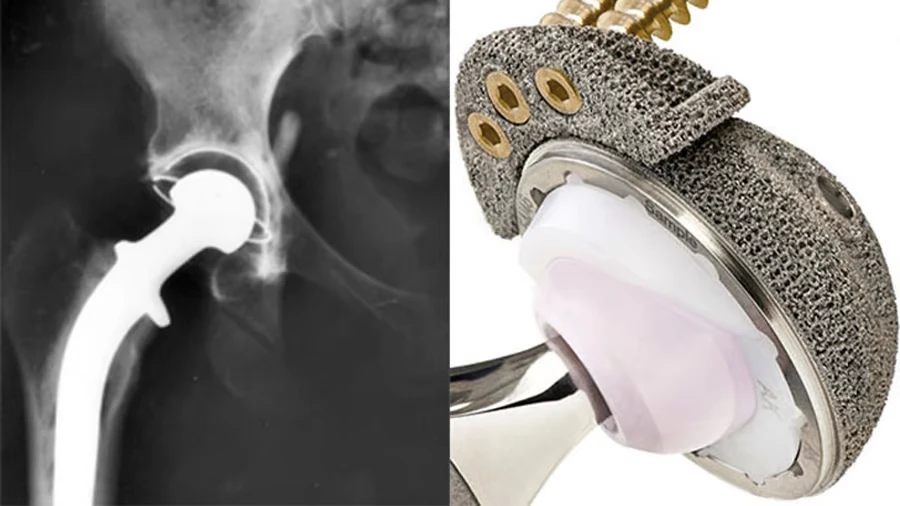
Advantages
Here are some of the advantages of this technology:
- Customization: It allows creation of highly customized implants that precisely match the patient’s unique anatomy. This is particularly beneficial for complex bone fractures or patients with deformities. Traditional implants often require extensive surgery to fit correctly, leading to longer recovery times and increased risk of complications. 3D printed implants can usually be inserted through smaller incisions, minimizing tissue damage and promoting faster healing.
- Improved bone growth: Some 3D printed bone implants are designed with porous structures that mimic the natural architecture of bone. This can encourage bone ingrowth, promoting a stronger and more stable bond between the implant and the surrounding tissue. This improved integration can also reduce the risk of implant rejection or loosening, a significant problem with traditional metal implants.
- Reduced surgery time and complexity: 3D printed surgical guides can be created based on the patient’s CT scans, allowing surgeons to plan and perform complex procedures with greater precision and efficiency. This can lead to shorter surgery times, less blood loss, and faster recovery. Additionally, they can be used for pre-operative planning and education, helping surgeons and patients better understand the procedure and its potential outcomes.
- Potential for bioprinting: Researchers are exploring the possibility of bioprinting bones using a patient’s cells. This could revolutionize bone repair and regeneration, allowing for the creation of living, functional bone tissue.
Disadvantages
Here are some of the disadvantages of 3D printed bones:
- Lack of affordability: They are costly and not widely available, requiring specialized equipment, materials, and expertise. The cost of 3D printing a bone scaffold or implant can range from thousands to millions of dollars, depending on the product’s size, complexity, and quality. Moreover, the maintenance and operation of the 3D printers and scanners can also add to the cost.
- Technical challenges: They still face many technical challenges before they can be used for mainstream clinical applications, such as biocompatibility, mechanical strength, vascularization, and functionality of the printed bone tissue. The selection of biomaterials, bioinks, and cells, the scaffold’s internal architecture design, the choice of the printing parameters, and the post-processing methods should be optimized to achieve the best biomimetic performance. Furthermore, the quality control and standardization of the 3D printing process and products should be ensured to avoid errors and defects.
- Unavailability in specific locations: They are not accessible or feasible in certain locations due to the lack of dedicated establishments and skilled professionals. The 3D printing facilities and services may be limited or absent in remote or rural areas, where the demand for bone replacements or repairs may be high. Moreover, the 3D printing personnel may not have sufficient training or experience to handle the complex and delicate 3D printing process and products.
Ethical Concerns
This technology also raises some ethical concerns that need to be addressed, such as:
- Enhancement beyond normality: They may be used to enhance the capacity of individuals beyond what is ‘normal’ for humans, such as creating stronger, more intelligent, or more attractive bones. Should we allow or encourage such enhancements? What are the implications for human identity, dignity, and diversity?
- Justice in access to health care: They are costly and not widely available, which may create disparities in health between the rich and poor. Should these treatments only be available to those who can pay the additional cost? How can we ensure that everyone has equal access to this technology?
- Testing for safety and efficacy: They still face many technical challenges before they can be used for mainstream clinical applications. How can we test the safety and efficacy of these products without harming human or animal subjects? What are the standards and regulations for quality control and standardization of the 3D printing process and products?
Governance and Regulation
The concerns associated with 3D printed bones must be governed and regulated by appropriate authorities and standards. Some of the aspects that need to be considered are:
- Quality and safety: They should meet the quality and safety requirements for medical devices, such as biocompatibility, sterility, mechanical strength, and functionality. The 3D printing process and products should be validated, verified, and controlled to ensure consistency and reliability. The FDA has issued some guidance documents and technical considerations for 3D printing of medical devices.
- Ethics and consent: They should respect the ethical principles and values of the patients and society, such as autonomy, beneficence, non-maleficence, and justice. The patients should be informed and consented to use 3D printed bone products, and their privacy and confidentiality should be protected. The use of human or animal cells, tissues, or organs should be regulated and monitored to prevent abuse or exploitation.
- Intellectual property and liability: The 3D printed bone products should respect the intellectual property rights and interests of the inventors, manufacturers, and users, such as patents, trademarks, and copyrights. The liability and responsibility for the 3D printed bone products should be clearly defined and allocated among the stakeholders, such as designers, printers, clinicians, and patients. The legal and contractual issues should be addressed and resolved in case of disputes or damages.
More research and discussion are needed to develop and implement appropriate policies and frameworks for this technology.
History
The history of this technology can be traced back to the following milestones:
- 1981: Dr. Hideo Kodama proposed the first 3D printing technology, stereolithography, which used a photopolymer resin cured by UV light.
- 1988: Charles Hull commercialized stereolithography technology and founded the 3D Systems company.
- 1990s: Various 3D printing methods and materials were developed, such as fused deposition modeling, selective laser sintering, and inkjet printing.
- 2000s: 3D printing was applied to biomedical fields, such as tissue engineering, drug delivery, and organ transplantation.
- 2010s: 3D printing of bone tissue became a promising technique for treating bone defects, diseases, and injuries, using ceramic inks, bioinks, and high-strength hydrogels.
- 2020s: 3D printing of bone tissue advanced to create vascularized and functional bone tissues, intelligent and responsive bone materials, and nanotechnology and biomimetics integrated bone materials.
Tools and Services
Some of the associated tools and services are:
- 3D printers and scanners: These devices can print and scan bone structures and implants using materials and methods, such as ceramic inks, bioinks, and laser sintering. Some of these devices are portable and handheld, which can be used in situ or surgical settings. Two major types of 3D bone printers are power-bed fusion and stereolithography (SLA).
- 3D printing software and platforms: These are the applications and systems that can design, model, slice, and control the 3D printing process and products, such as bone scaffolds, drug delivery systems, and anatomy models. Some of these software and platforms are cloud-based, which can enable remote access and collaboration – Materialise Mimics, Simplant, Materialise Magics, 3D Systems Invivo, and OsiriX.
- 3D printing services and facilities: These are the organizations and establishments that can provide 3D printing services and facilities for bone-related applications, such as tissue engineering, drug screening, and organ transplantation. Some of these services and facilities are specialized and dedicated to the 3D printing of bone tissue.
How to Get Started?
To get started with this technology, you will need:
- A 3D printer and scanner that can print and scan bone structures and implants using different materials and methods, such as ceramic inks, bioinks, and laser sintering.
- A 3D printing software and platform that can design, model, slice, and control the 3D printing process and products, such as bone scaffolds, drug delivery systems, and anatomy models.
- A 3D printing service and facility that can provide 3D printing services and facilities for bone-related applications, such as tissue engineering, drug screening, and organ transplantation.
Best Practices
Some of the best practices for getting the most from this technology are:
- Choosing the appropriate 3D printing method and material: Depending on the application and the desired properties of the bone implant, different 3D printing methods and materials can be used, such as extrusion-based printing, inkjet-based printing, and laser-based printing, using ceramic inks, bioinks, and metal or ceramic powders. The choice of the 3D printing method and material should consider factors such as biocompatibility, mechanical strength, porosity, degradation, and cost.
- Designing and optimizing the scaffold geometry and architecture: The scaffold geometry and architecture can affect the performance and integration of the bone implant, such as bone tissue regeneration, vascularization, and functionality. The scaffold geometry and architecture should be designed and optimized to match the bone defect area’s size, shape, and structure and to mimic the hierarchical and multiscale organization of natural bone, such as the lamellar structure, osteon structure, and trabecular structure.
- Incorporating living cells and growth factors: Incorporating living cells and growth factors, such as osteogenesis, angiogenesis, and immunomodulation, can enhance the bioactivity and functionality of the bone implant. The live cells and growth factors can be added to the 3D printing ink or seeded onto the scaffold after printing. The choice of the cell type, source, density, growth factor type, dose, and delivery method should be carefully considered to ensure the cells’ viability and differentiation and the growth factors’ stability and release.
- Testing and validating the 3D printing process and products: The 3D printing process and products should be tested and validated to ensure the quality and safety of the bone implant, such as the accuracy, consistency, and reliability of the printing process, and the biocompatibility, sterility, mechanical strength, and functionality of the printed scaffold. The testing and validation should follow the standards and regulations for 3D printing of medical devices, such as the FDA guidance documents and technical considerations.
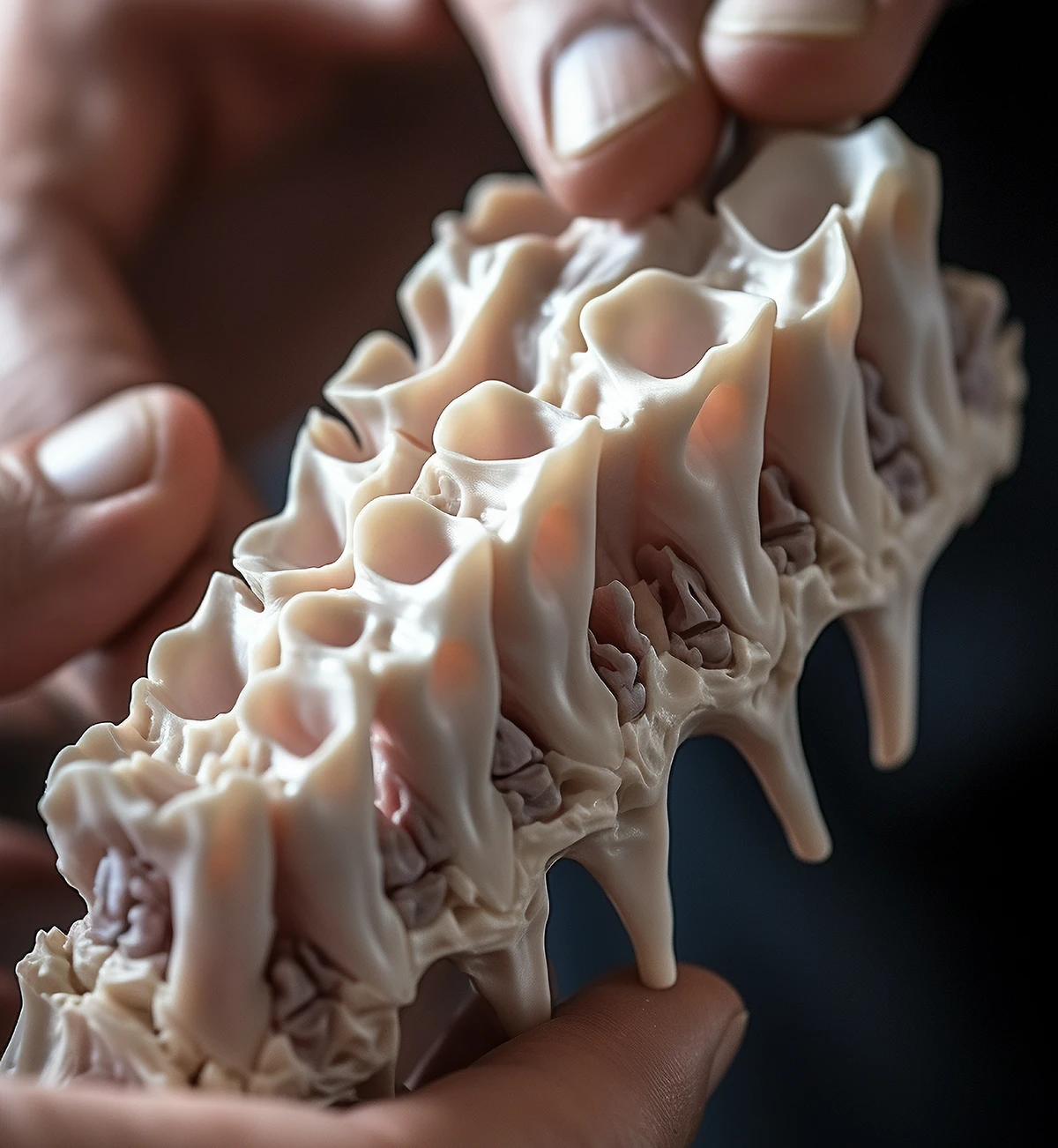
Related Terms
Some of the terms related to this technology are:
- Ceramic ink: Material that mimics the structure and chemistry of natural bone and can be printed at room temperature in a gelatin bath with living cells and growth factors.
- Bioink: Material that contains a mixture of cells, biomolecules, and extracellular matrix and can form complex and functional bone tissues, such as vascularized and osteogenic tissues.
- COBICS: Acronym for ceramic omnidirectional bioprinting in cell suspensions, a novel technique that enables 3D printing of bone-like structures directly into the patient’s body.
- Scaffold: Structure that supports the growth and differentiation of cells and tissues, can integrate with the existing bone tissue, and promotes healing.
- Prosthesis: A device that replaces a missing or damaged body part, such as a joint, an entire bone, or a part of the spine, skull, or pelvis.
- Drug delivery system: A device that delivers drugs or other therapeutic agents to a specific site in the body, such as a bone defect or a tumor.
- Anatomy model: A replica of a part of the body, such as a bone, an organ, or a tissue, that can be used for education, research, or surgical planning.
Learn More
Research Papers
- 3D Printing for Bone Regeneration: This paper reviews the development of 3D printing technology used in the biomedical industry for bone regeneration. It discusses the correlation between materials and structural design aspects of 3D printing with biological response from host tissue upon implantation.
- Progress in 3D printing for bone tissue engineering: a review: This paper summarizes the research progress of polymer materials and tissue engineering scaffolds prepared by 3D printing technology. It also discusses some of the challenges related to specific 3D printing operations.
- Unraveling of Advances in 3D-Printed Polymer-Based Bone Scaffolds: This paper focuses on applying high-strength hydrogels in 3D printing for bone tissue engineering. It also anticipates the future development of 3D printing in this field.
- A Review of 3D Printed Bones Implants: This paper provides a report on the related achievements of bone implants based on 3D printing technology in recent years, including materials, molding methods, optimization of implant structure and performance, etc. It also points out the shortcomings of 3D printing bone implants, making the prospect of 4D printing possible. 3D printed bones is a technique that allows bioengineers to create synthetic bone material with living cells inside the human body. This technology has potential applications for treating bone defects, diseases, and injuries, modeling bone disease, and studying bone’s unique microenvironment.
Articles
- 3D printing of bone and cartilage with polymer materials: This article summarizes the research progress of polymer materials and tissue engineering scaffolds prepared by 3D printing technology. It also discusses some of the challenges related to specific 3D printing operations.
- This 3D printed soft robotic hand has ‘bones,’ ‘ligaments,’ and ‘tendons’: This article explains how 3D printed designs are usually limited to fast-drying polymers, but a new method enables wild, soft robotic possibilities. It also shows how the 3D printed robot hand can perform actions such as jumping, grabbing onto things, and playing the piano.
Books
- 3D Printing in Bone Surgery by Carmine Zoccali, Pietro Ruggieri, and Francesco Benazzo: This book provides a comprehensive overview of the use of 3D printing in bone surgery, covering the principles, methods, materials, and applications of this technology. It also presents real-world case studies from different bone segments, such as the spine, skull, pelvis, and extremities.
- Bone Tissue Engineering by Fernando P.S. Guastaldi and Bhushan Mahadik: This book reviews the development of 3D printing technology in the biomedical industry towards bone regeneration. It discusses the correlation between materials and structural design aspects of 3D printing with biological response from host tissue upon implantation.
Courses
- 3D Printing and Bioprinting Bones: This virtual course is offered by 3DHeals, a platform that connects stakeholders in the healthcare 3D printing industry. The course covers the principles, methods, materials, and applications of 3D printing and bioprinting for bone regeneration. The course also features speakers from different backgrounds and disciplines, such as bioengineering, chemistry, biology, and medicine.
- 3-D Printing for Health Science Students: This is an elective course offered by the University of California, San Francisco, a public research university. The course teaches students how to transform a standard CT scan into a 3D model from start to finish. The course also introduces students to the Makers Lab, a creative space providing access to 3D printers and scanners, and the Department of Anatomy, including human specimens and cadavers.
Other
- Click – 3D-Printed Bones: This documentary covers some of the latest health tech developments, including 3D printed bones for cancer patients and the latest devices to help us get a better night’s sleep. It also features a startup in Mumbai that 3D printed bones for over 1200 surgeries, using MRI scans to build affordable and personalized anatomy models.
I hope you enjoyed this insightful discourse. I believe that open dialogue and diverse perspectives are essential for fostering a deeper understanding of complex issues. Therefore, encourage you to share your thoughts and opinions in the comments below. Engage with other readers, challenge assumptions, and contribute to a rich and meaningful discussion. Your insights are valuable, and welcome you to participate actively in this intellectual exchange.
Together, we can explore new ideas, expand our horizons, and generate fresh perspectives.

Learner-in-Chief at Future Disruptor. A futurist, entrepreneur, and management consultant, who is passionate about learning, researching, experimenting, and building solutions through ideas and technologies that will shape our future.
Subscribe to the Future Disruptor newsletter.
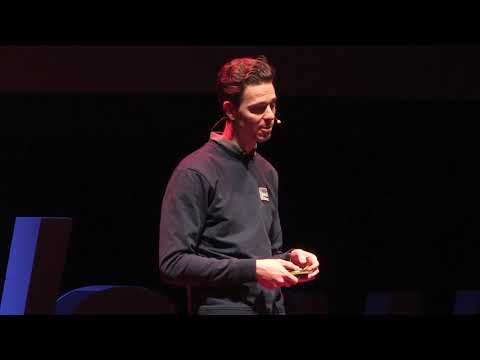
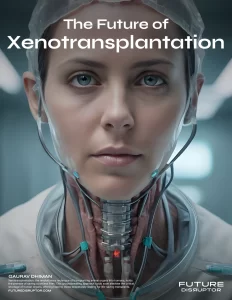
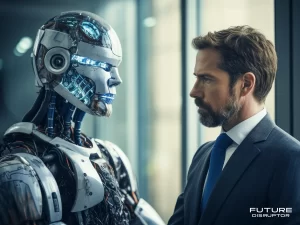



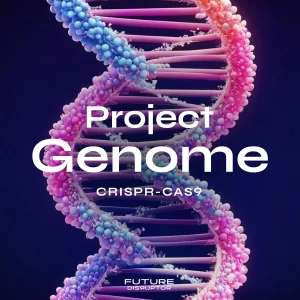
Leave a Reply